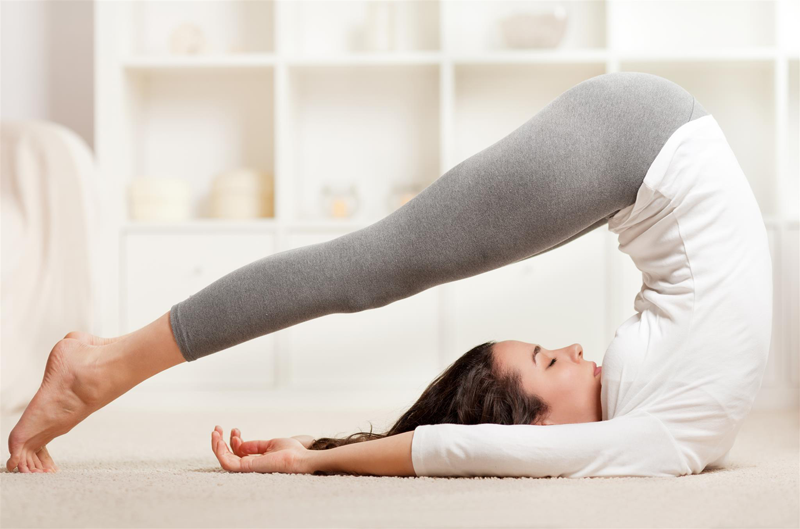Anusara Yoga is best described as a modern-day Hatha Yoga practice. Founded by yoga guru, John Friend, the simplistic style is popular amongst yogis of all sorts. When translated, Anusara means ‘following your heart’ and ‘flowing with grace’. Using a combination of physical postures and breathing techniques, the practice focusses on the universal principles of alignment. To allow the body to stretch sufficiently, it’s worth picking up some flexible yoga clothes before attending an Anusara class. In this article, we explore Anusara Yoga in more detail.
History and Origins
As mentioned previously, Anusara was founded by John Friend. From a young age, Friend had been a keen user of Iyengar Yoga. In the 1990’s, he decided to design his own yoga system that focussed on the universal principles of alignment. In 2012, John Friend decided to step down as leader of the practice. Around the same time, many other Anusara instructors resigned from the organisation, too; however, classes can still be found in various locations worldwide.
Philosophy
Anusara is built upon the philosophy that we are all naturally good. The practice uses the universal princi-ples of alignment, which are carried out through a range of different asanas. In any type of yoga, these principles are important as they teach practitioners how to align your body, heart, and mind for the best effects. Typically, the correct alignment will improve blood flow; ultimately, this will allow the physical and emotional body to run smoothly.
Practice
While Anusara classes are less popular today than they were in the 1990’s, a handful of sessions can still be found around the world. If you don’t live in close proximity to an Anusara Studio, the style can always be practised independently from your own home, instead. For beginners, following online tutorials can be a great way to learn the basics. After a few sessions, practitioners often find that they are capable of practising alone – especially those that already practice other yoga styles.
When practising Anusara Yoga, practitioners should follow a set ritual for best results. Typically, this ritual begins with the ‘om’ mantra before moving onto three Sanskrit chants of the Anusara invocation. Finally, practitioners flow through some physical asanas.
Most Anusara instructors choose to teach in the Vinyasa Style. This involves holding the key asanas for a longer duration than other styles. Practitioners are encouraged to flow each pose to the next. As well as being relaxing in nature, flow practice helps connect students to their breath; the breath can then be used as a guide during asana practice.
Benefits
Like all styles of yoga, regular Anusara practice boasts a range of great benefits to the body and mind. After each class, practitioners can enjoy all the standard benefits of physical poses, including increased flexibility, strength, and a calmer mind. Additionally, Anusara has the added benefit of correct alignment. Although physical alignment is worked on during each class, students also focus on the ‘universal principles’. These principles are Muscular Energy, Opening to Grace, Inner Spiral, Outer Spiral, and Organic Energy. Learning how to use these aspects will result in better physical, spiritual, and emotional practice.
Poses for Beginners
Half Moon Pose
Half Moon Pose is often practised within Anusara sessions. To practice this posture, begin by standing tall. Next, move your feet wide apart and turn your right foot 90 degrees clockwise. Bending at the waist, gently bring your hands to the ground and rest them in-line with your feet. Next, lift your left leg off the ground and extend it into the air. Finally, lift your left hand and stretch it into the air. You are in Half Moon Pose. Hold the position for around 30 seconds before lowering your arm and leg back down to the ground.
Cobra Pose
Cobra Pose is another popular asana within Anusara Practice. To practice this pose, lie down on your mat with your stomach touching the ground. Extend your legs, keeping the tops of your feet touching the ground. Next, place your hands flat on the ground directly under your shoulders. Gently bring your elbows back into your body whilst pressing your thighs and the tops of your feet into the ground. Next, straighten both arms and lift your chest off the floor. Finally, press your tailbone firmly into the ground and engage your buttocks. You are in Cobra Pose. Hold the asanas for around 30 seconds whilst breathing deeply.
Downward Facing Dog
A firm favourite of many yogis, Downward Facing Dog is another Anusara posture. To practice this asana, stand tall with your feet shoulder-width apart. Bending at the waist, lower your torso forward until your body forms a triangle. Your palms should now be touching the ground. Spreading your fingers for additional balance, move your head forward until it is in-between your upper arms. You are in Downward Facing Dog. Hold the position for around 2 minutes, or for as long as it feels comfortable to do so.
Twisted Pose
Another popular Anusara position is Twisted Pose. To practice this asana, sit on the ground with your legs stretched out in front of you. Bending your right leg at the knee, place your right foot on the inside of your left knee. Using your left hand, grab ahold of your right foot and twist your upper body to look over your right shoulder. You are now in Twisted Pose. Hold the position for 30 seconds before switching sides.
In Summary
Whether you’re hoping to increase your flexibility or you’re more interested in using the principles of alignment, practice Anusara Yoga regularly to reap the benefits. If you’re practising independently, it’s essential to pick up some good-quality yoga gear before beginning.

